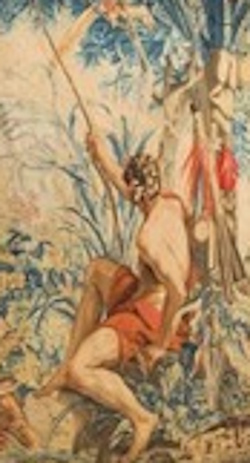

The Other Side of the Tapestry
In a suburb of São Paulo,
on one of those hot days, we are visiting
the Fundação Oscar and Luisa Americano,
a low elegant tranquil building.
I see my first Gobelin tapestry there.
You tell me they are the best tapestries
in the world, offering fragments
of a bourgeois vision, a textile recreation
of an earthly paradise,
to hang inside the halls of wealth
and power and culture.
As you lecture, my mind wanders.
Quite frankly, the problem with tapestries
– with writing or thinking about tapestries,
is that lazy invitation to create
connections and patterns,
that pedestrian segue into
metaphor and myth, as in
the fabric of existence, life’s rich … etc.
and then routinely celebrate those patient
Penelopes telling and untelling
their tedious chaste stories.
I step forward, touch,
lift the corner,
feel the weight, the texture,
the roughness of the stitching,
look to the other side
of the tapestry, the obverse,
the reverse, its concealed face.
Now the image is negatived, diffuse,
conjugated differently,
deconstructed.
I study the stitches,
threads, wools, silks, needles,
colours, hues, the workmanlike
mechanics of the process,
the warp and the weft, imagine
the wooden frames and pegs
that would hold the tension,
summon up the physical effort demanded.
I see evidence of error covered up,
stitched over in haste,
loose threads sewn through, protruding,
thickening the texture,
a different message communicated.
I see the brownish flecks where a tired hand
slipped, stabbed, bled out,
and left its human stain.
Try that for a vision, I say,
as we leave the cool glass lounge
where the tapestry hangs,
before heading back down your
rabbit-hole of abstractions.
Amanda Brookfield
If you have any thoughts about this poem, Amanda
Brookfield would be pleased to hear them


